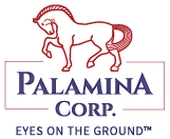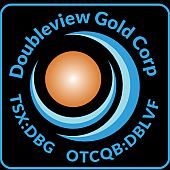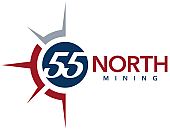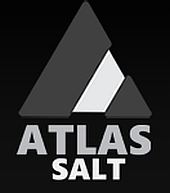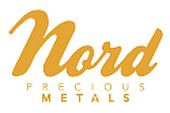 Mongoose drills 30.9 m of 540 ppm Co at Bass River
Mongoose drills 30.9 m of 540 ppm Co at Bass River
2022-04-20 16:52 ET – News Release
Mr. Terry Coughlan reports
MONGOOSE MINING DRILLS 30.9 METRES OF 540 PPM COBALT AT ITS BASS RIVER IOCG PROJECT IN NOVA SCOTIA
Mongoose Mining Ltd. has encountered significant intercepts of cobalt-bearing pyritic magnetite in three drill holes at its Bass River project, near Londonderry and Bass River, N.S. These holes were part of a six-hole, 1,056-metre drill program performed in the fall of 2021 with the support of the Nova Scotia Mineral Resources Development Fund. Hole BR-21-06 is the deepest hole drilled to date and intersected a cobaltiferous zone at 17.75 metres to 101.6 metres (83.85 m of 237 parts per million) that included 1,068 ppm over 2.25 m. The true thickness of the pyritic magnetite zone is yet to be determined; however, the minimum thickness is estimated to be 30 metres. Interesting values of titanium over 1 per cent (five m of 1.2 per cent) and elevated values of cerium and lanthanum rare earth elements exist in holes BR-21-04 and BR-21-06. The rare earth element yttrium was identified in BR-21-06 utilizing micro-XRF (Buyers et al., AGS Colloquim, Fredericton, N.B., Feb. 11 and Feb. 12, 2022). Several samples have copper values as high as 0.3 per cent.
BR-21-04 and BR-21-05 targeted magnetic and induced polarization anomalies adjacent to the mineralized zone and failed to intersect significant mineralization. The company now suspects the magnetic signature in this area is the best indication of cobalt mineralization. BR-21-07 tested an IP anomaly elsewhere on the property and failed to explain the response. (See the attached drill hole results.)
A magnetic anomaly associated with the cobalt-bearing pyritic magnetite is approximately one kilometre in length, and previous inversion modelling of the magnetics suggests a depth to 1,000 m (A.P. Belperio, Minotaur Exploration Ltd., March, 2010).
The pyritic magnetite is now believed to have untested potential extending four kilometres westward of the Bass River cobalt prospect along the Cobequid fault. Several untested magnetic anomalies occur along the Cobequid fault, and a cobalt assay of 1,100 ppm was discovered in a bedrock grab sample four km westward of the above-mentioned drilling at the Fire Road prospect.
An iron oxide copper/gold (IOCG) model is a diverse suite of elements, including various combinations of rare earth elements, fluorine, phosphorus, molybdenum, silver, barium, cobalt and nickel, and many of these elements are important commodities in the context of IOCG deposits. The main characteristic of IOCG deposits features hydrothermal ore styles, strong structural controls and abundant iron oxides with an iron/titanium relationship. The recent drilling has demonstrated many of these characteristics, indicating the potential for an IOCG discovery.
 |
Other exciting copper/cobalt target areas along the Cobequid fault IOCG trend.
The Steele Run (formerly Mount Thom) copper prospect was discovered by Imperial Oil in the early 1970s. The IOCG model and cobalt mineralization were later recognized. Mineralized outcrop and sporadic core sampling have recently produced assays of up to 0.863 per cent cobalt within historic 1.5-per-cent-grading copper zones. A 2004 government study of 29 core samples encountered values ranging from 157 ppm (0.0157 per cent) cobalt to 8,630 ppm (0.863 per cent). (See the press release of International Cobalt Corp. on May 22, 2018.)
Previous exploration summary
In 2018, Chilean Metals Inc. (now Power Nickel Inc.), former rights holder at the company’s Bass River claims, announced elevated cobalt and iron values that were found by resampling historic 1987 drill core at the property (see press release dated July 23, 2018). These assay results (below) showed intersections in the carbonate stock zone at surface (core intercepts, true thickness is yet to be determined).
- Hole BR-97-1: 25 m of 547 ppm cobalt and 20.9 per cent iron from five-metre to 30-metre depth;
- Hole BR-97-2: 29 m of 662 ppm cobalt and 21.9 per cent iron from three-metre to 32-metre depth including 15 m of 812 ppm cobalt and 26.9 per cent iron.
In 2020, with the support of the Nova Scotia Mineral Resources Development Fund, Spark Minerals Inc. (now a wholly owned subsidiary of Mongoose) drilled a 202-metre hole to further evaluate a previously recognized cobalt-iron occurrence. Diamond drill hole, BR-20-01, intersected 24 m of 480 ppm cobalt and 20 per cent iron from a six-metre depth, including five m of 717 ppm cobalt and 28 per cent iron. The highest-grading one-metre interval was 941 ppm cobalt and 39 per cent iron. These are drill core intercepts, and the true thickness is yet to be determined.
Terry Coughlan, chief executive officer, commented: “With the better-defined cobalt intercepts, it appears that this property has a robust mineralized system. Pyrite content is clearly the controlling factor on cobalt grade, and the potential of discovering thicker zones of pyritic magnetite is considered excellent. The target area has now been identified at over four kilometres in strike length. To date, drilling was confined to only 150 m of strike and 145 m of depth. With further drilling, we may have the potential for an interesting cobalt project, which is one of Canada’s strategic metals. It is important to note that the company has 10 high-priority targets along our 39-kilometre length of claims, having what the company believes is high potential for IOCG discoveries.”
Procedure, quality assurance and quality control, and data verification
Drill hole locations are spotted by Mongoose personnel, and pad construction is supervised with foresight/backsight markers set to align in the direction of drilling. Drilling was conducted by Maritime Diamond Drilling Ltd. from Brookfield, N.S., utilizing an EF-50 hydraulic drill recovering NQ sized core. It is the driller’s responsibility to ensure core is in the boxes in correct order and to mark the tags for each rod length of core. Downhole surveys are conducted at 50- to 100-metre intervals using a Reflex survey device to measure azimuth and dip of the drill hole; however, data sites were frequently missed due to high magnetism of the local wall rock. Core boxes were collected from the drill site by four-wheel-drive truck and delivered to Mongoose’s core facility in East Chester, N.S.
At the core shed, the drill core is rotated with respect to structural or primary fabric, reassembled to determine core recovery, and geologically logged and marked for sampling by a professionally registered geologist. The core is then photographed by a Mongoose technician. Sampling used a prenumbered three-tag system that included insertion of a sample tag in the core box at the corresponding sample interval, insertion of a tag in the prenumbered sample bag and a third tag left in the sample book. After the sample intervals are determined, the full core is cut using a diamond blade core saw with one-half of the core being bagged and tagged for assay. The remaining half portion is returned to the core trays for storage and later geological review and/or potential metallurgical testwork.
The sealed and tagged sample bags were placed in covered 20-litre plastic buckets and driven by Mongoose personnel to Day & Ross Shipping in Dartmouth, N.S., and then transported by Day & Ross to the Eastern Analytical Ltd. facility in Springdale, Nfld. Eastern Analytical crushes the samples and prepares 200- to 300-gram pulp samples with 95 per cent passing Tyler 150 mesh (code PUL85). The pulps are assayed for gold using a 30-gram charge by fire assay with an analytical range of five to 30,000 parts per billion. Cobalt and 33-multielement analysis is completed by total digestion in four acids and analyzed by ICP-OES. Overlimits greater than 550 ppm cobalt are reassayed using an atomic adsorption (AA) finish. Before analysis by AA, 0.200 gram to 2.00 grams are digested with three acids.
Quality assurance and quality control procedures include the systematic insertion and monitoring of appropriate reference materials (certified standards, blanks and duplicates) in the sample stream. The results of assaying the QA/QC material included in each batch are tracked to ensure the integrity of the assay data. Mongoose inserted 13 standards and 12 analytical blanks at intervals of 15 samples in a 428-sample analytical batch. The cobalt standard consistently fell within the plus or minus two standard deviation control limits for the Bass River project. All blank samples returned cobalt values below or near the lower detection limit of two ppm cobalt indicating sample cross-contamination did not occur. Forty-two duplicates were inserted at 10 sample intervals by Eastern Analytical. A comparison of pulp split values shows an acceptable level of correlation along a one-to-one trend line. All results stated in this press release have passed conventional QA/QC protocols.
Qualified person
The scientific and technical information contained in this news release has been reviewed and approved by Terry Coughlan, PGeo, the company’s chief executive officer, a qualified person within the context of Canadian Securities Administrators’ National Instrument 43-101 (Standards of Disclosure for Mineral Projects). The exploration work was performed by Mark Graves, PGeo, an arm’s-length geological consultant to the company who also approved the technical content of the release.
About Mongoose Mining Ltd.
Mongoose is a Canadian exploration company engaged in the acquisition, exploration and evaluation of mineral properties in Canada. The company is the holder of exploration licences to explore claims located near Londonderry and Bass River, N.S. (the Cobequid Highlands property). The Cobequid Highlands property is recognized to indicate potential for IOCG mineralization.
We seek Safe Harbor.








